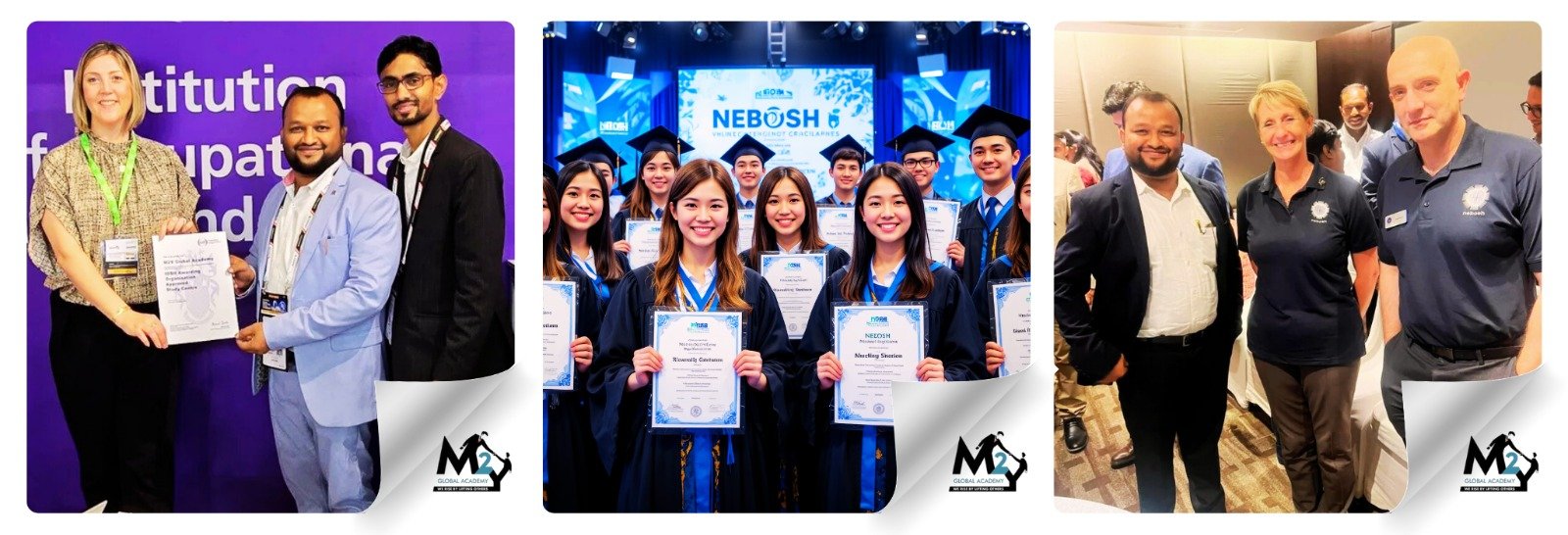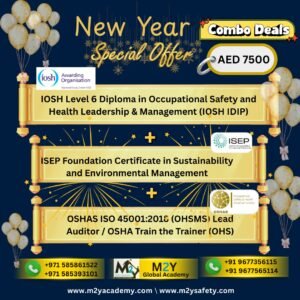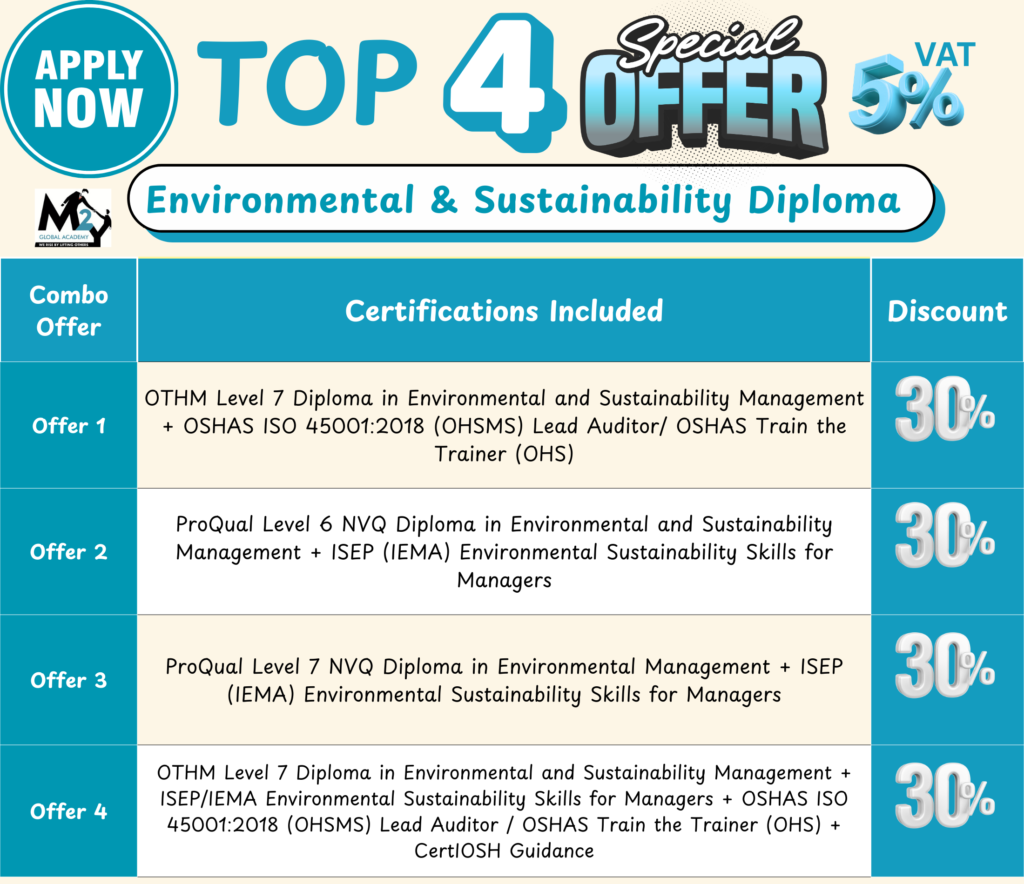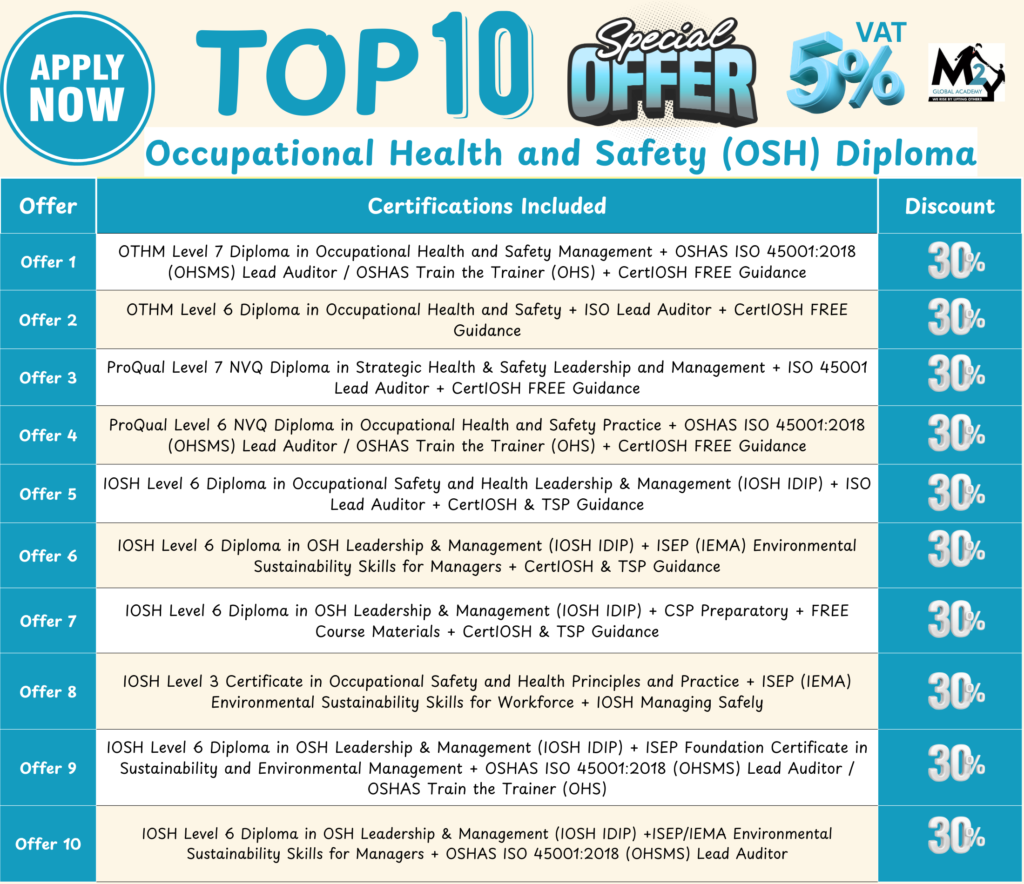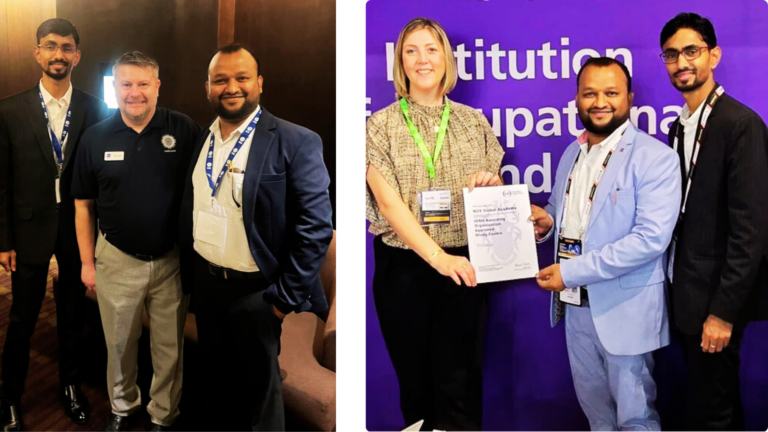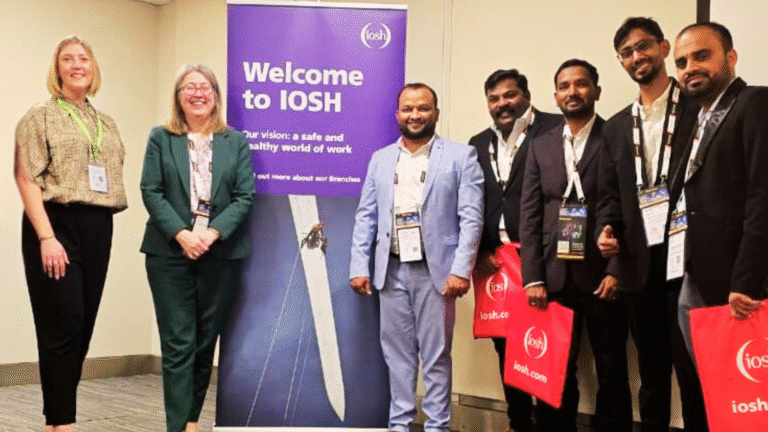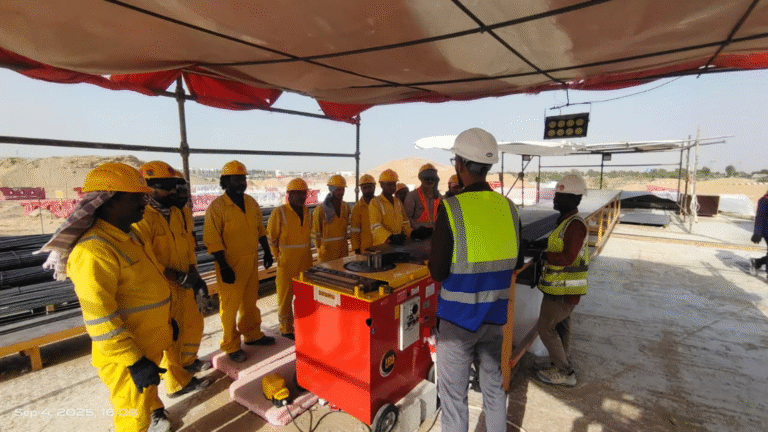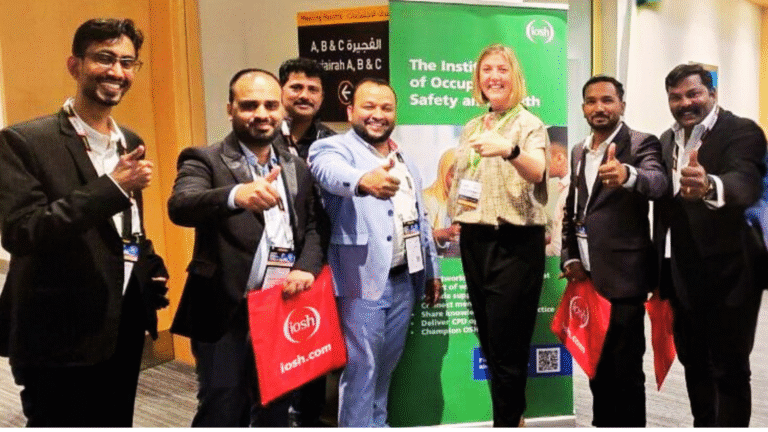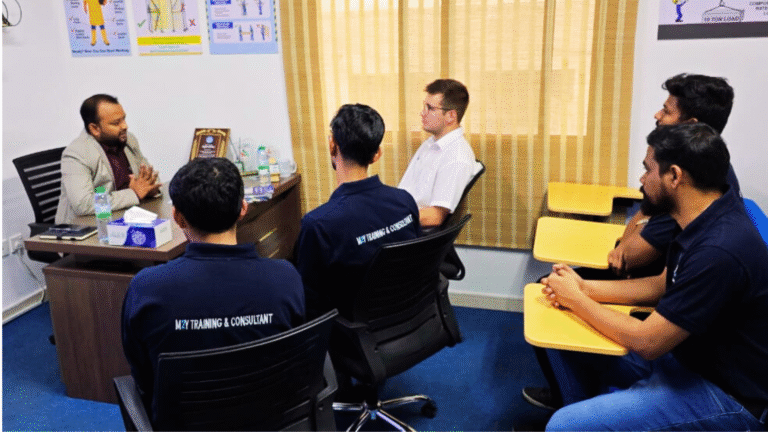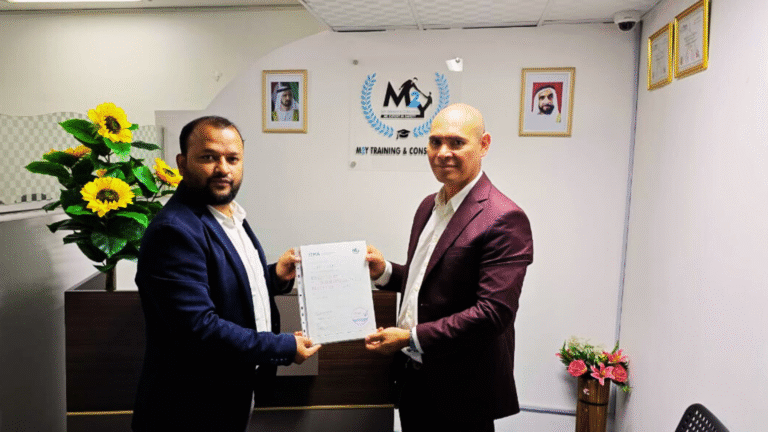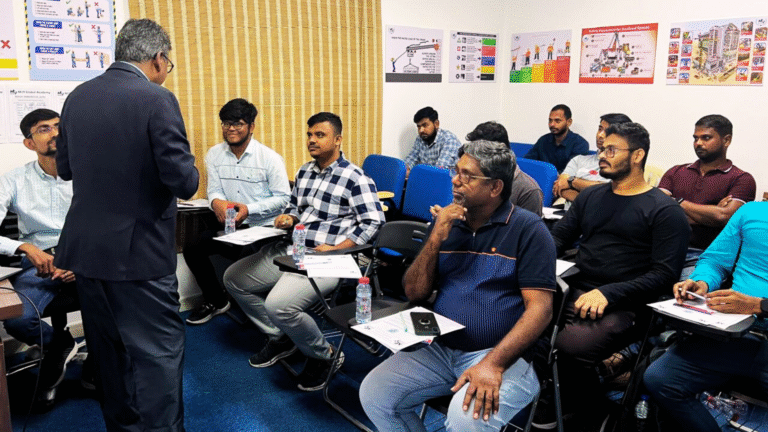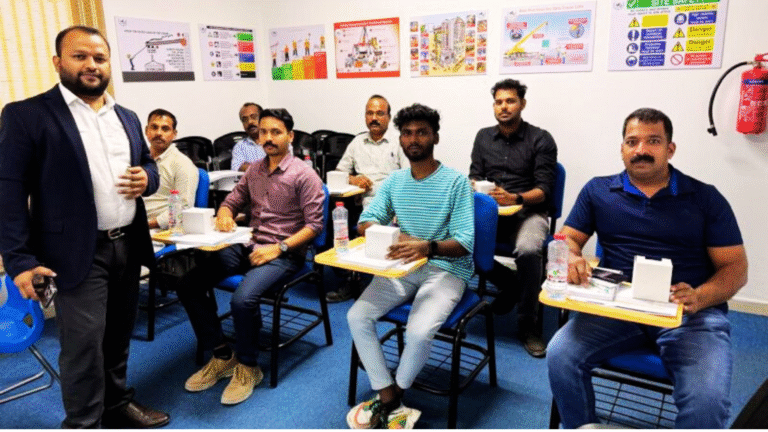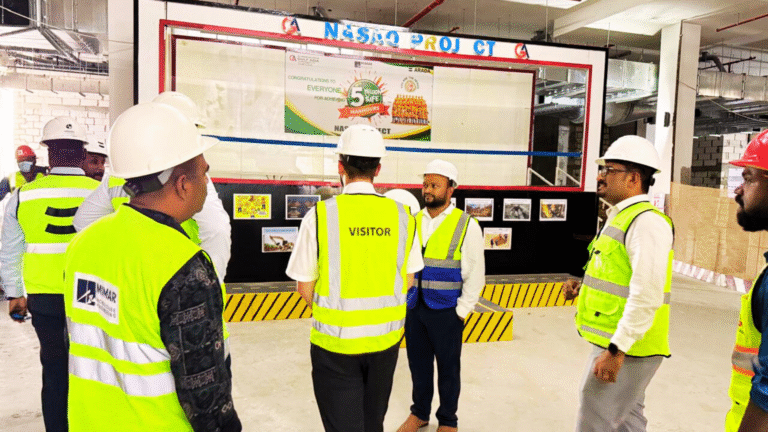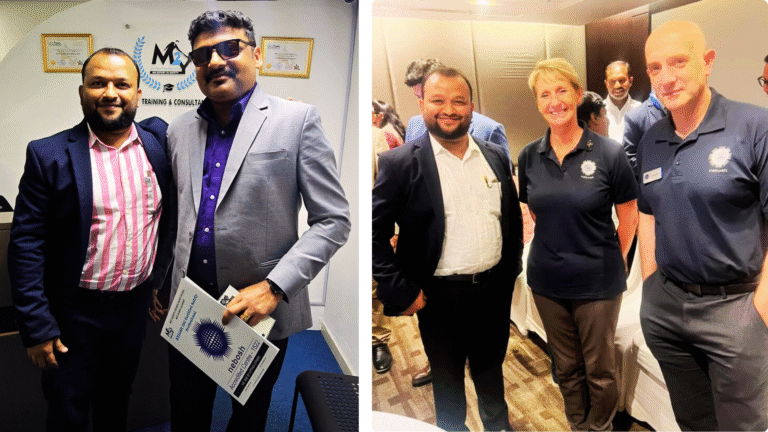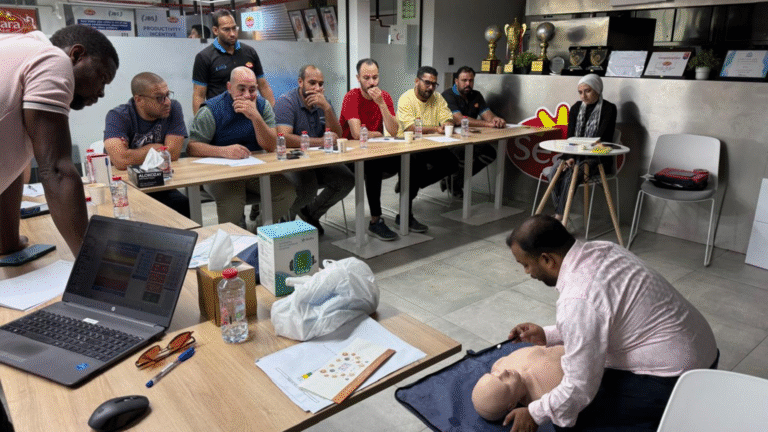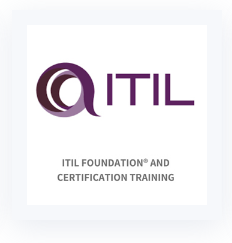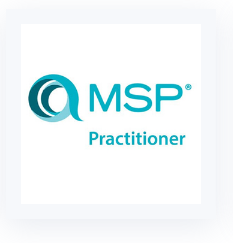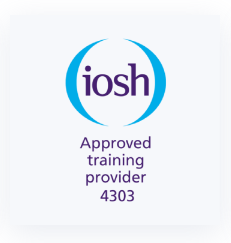HSE Officer
Top 50 HSE Officer Job Interview Questions with Answers
Health, Safety, and Environment (HSE) roles are crucial in ensuring workplace safety, regulatory compliance, and promoting a culture of health and safety within organizations. If you’re preparing for an HSE job interview, it’s essential to anticipate the questions you might be asked and prepare strong answers. Below, we’ve compiled the top 50 HSE job interview questions along with sample answers to help you get ready for your next interview.

1. What are the key responsibilities of an HSE officer | Safety officer?
Answer:
An HSE officer is responsible for developing and implementing health, safety, and environmental policies, conducting risk assessments, investigating incidents, ensuring compliance with legislation, conducting training sessions, and promoting a culture of safety within the organization.
2. How do you conduct a risk assessment?
Answer:
A risk assessment involves identifying potential hazards, evaluating the risks associated with those hazards, determining who might be harmed and how, evaluating existing control measures, and recommending additional controls if necessary. Documentation and regular review of the assessment are also crucial.
3. What motivated you to pursue a career in Health, Safety, and Environment?
Answer:
My interest in HSE was sparked by a desire to make a positive impact on workplace safety and health. I have always been passionate about ensuring that people can work in safe environments and return home safely every day. This field allows me to contribute to that mission, ensuring compliance with regulations and fostering a culture of safety.
4. Can you give an example of a time you identified a hazard and how you addressed it?
Answer:
In my previous role, I identified a tripping hazard caused by cables running across a walkway. I conducted a risk assessment, discussed the issue with the team, and implemented cable management solutions. We also added clear signage and educated staff on keeping pathways clear, significantly reducing the risk of trips and falls.
5. What steps do you take to ensure compliance with HSE regulations?
Answer:
Ensuring compliance involves staying updated with the latest HSE regulations, conducting regular audits and inspections, providing training to employees, and maintaining clear documentation. It also requires fostering a culture of safety where everyone is aware of and committed to following safety protocols.
6. How do you handle a situation where an employee is not following safety procedures?
Answer:
First, I would approach the employee to understand why they are not following the procedures. I would then provide additional training or support if needed. If non-compliance continues, I would follow the organization’s disciplinary procedures to ensure that safety standards are maintained.
7. What are the most common workplace hazards, and how can they be mitigated?
Answer:
Common workplace hazards include slips, trips, falls, electrical hazards, chemical exposure, and ergonomic issues. Mitigation measures include proper housekeeping, use of PPE, regular maintenance, proper storage and labeling of chemicals, and ergonomic assessments and adjustments.
8. Describe your experience with conducting HSE training sessions.
Answer:
I have conducted numerous HSE training sessions covering topics such as emergency response, proper use of PPE, hazard recognition, and specific safety protocols relevant to the industry. I ensure the training is engaging, interactive, and tailored to the audience’s needs to maximize understanding and retention.
9. What methods do you use to investigate workplace incidents?
Answer:
Incident investigation involves gathering information through interviews, site inspections, and reviewing documentation. I use techniques like root cause analysis to identify underlying issues and recommend corrective actions to prevent future occurrences. Reporting and documenting findings are also crucial parts of the process.
10. How do you stay current with HSE best practices and regulations?
Answer:
I stay current by attending industry conferences, participating in professional organizations, subscribing to relevant publications, and taking continuing education courses. Networking with other HSE professionals and participating in online forums also helps me stay informed about the latest trends and best practices.
11. What is the importance of personal protective equipment (PPE) in the workplace?
Answer:
PPE is crucial for protecting employees from workplace hazards that cannot be eliminated through engineering or administrative controls. It serves as the last line of defense to reduce the risk of injury or illness and ensures that workers can perform their tasks safely.
12. How do you conduct an HSE audit?
Answer:
An HSE audit involves reviewing the organization’s policies, procedures, and practices to ensure compliance with regulations and standards. I conduct interviews, observe work practices, review documentation, and assess the effectiveness of control measures. The findings are documented, and recommendations for improvement are provided.
13. Can you describe a time when you successfully implemented a new safety program?
Answer:
In a previous role, I identified the need for an improved emergency response program. I developed a comprehensive plan that included updated procedures, regular drills, and training for all employees. The program was successfully implemented, and subsequent drills showed a marked improvement in response times and overall preparedness.
14. How do you prioritize safety issues when there are multiple concerns?
Answer:
I prioritize safety issues based on the severity and likelihood of potential harm. Immediate risks that could result in serious injury or fatality are addressed first. I also consider the number of people affected and the potential impact on operations. A systematic approach ensures that the most critical issues are resolved promptly.
15. What strategies do you use to promote a culture of safety in the workplace?
Answer:
Promoting a culture of safety involves leading by example, providing regular training, encouraging open communication about safety concerns, recognizing and rewarding safe behavior, and involving employees in safety initiatives. Consistent reinforcement of safety values helps build a strong safety culture.
16. How do you handle conflicting priorities between production and safety?
Answer:
Safety is always a priority, and I ensure that production targets do not compromise safety standards. I work closely with production teams to find solutions that meet both safety and operational goals. Effective communication and collaboration are key to balancing these priorities.
17. What role does communication play in effective HSE management?
Answer:
Communication is vital in HSE management as it ensures that everyone is aware of safety protocols, understands the risks, and knows how to mitigate them. Clear and open communication channels help in reporting hazards, sharing best practices, and fostering a collaborative approach to safety.
18. Describe a time when you had to manage an emergency situation.
Answer:
In a previous role, I managed a chemical spill emergency. I quickly assessed the situation, evacuated the area, and coordinated with emergency response teams. I ensured that the spill was contained and cleaned up safely and conducted a thorough investigation to prevent future incidents.
19. How do you ensure the effectiveness of safety training programs?
Answer:
To ensure effectiveness, I tailor the training to the specific needs of the audience, use interactive and engaging methods, and incorporate real-life scenarios. I also gather feedback, assess knowledge retention through quizzes or practical exercises, and make continuous improvements based on feedback and performance data.
20. What is your experience with environmental compliance?
Answer:
I have experience in ensuring compliance with environmental regulations, conducting environmental impact assessments, managing waste disposal, and implementing sustainability initiatives. I stay informed about changes in environmental laws and work to integrate environmentally responsible practices into the organization.
21. How do you handle resistance to safety initiatives from employees or management?
Answer:
I handle resistance by clearly communicating the benefits of the safety initiatives, involving stakeholders in the planning process, and addressing their concerns. Demonstrating the positive impact on employee well-being and productivity can also help gain buy-in from both employees and management.
22. What is a Job Safety Analysis (JSA), and how do you perform one?
Answer:
A Job Safety Analysis (JSA) is a process that identifies potential hazards associated with specific job tasks and develops measures to mitigate those risks. Performing a JSA involves breaking down the job into steps, identifying hazards for each step, and implementing controls to reduce or eliminate the risks.
23. How do you measure the success of an HSE program?
Answer:
The success of an HSE program can be measured through various metrics, such as the reduction in incident rates, improvement in safety audit scores, employee engagement in safety activities, and compliance with regulations. Regular reviews and feedback help in assessing and improving the program.
24. What are the most important elements of an HSE management system?
Answer:
Key elements of an HSE management system include leadership commitment, clear policies and procedures, risk assessment and control, training and competency, communication and consultation, incident investigation, performance monitoring, and continuous improvement.
25. How do you manage contractors' compliance with HSE policies?
Answer:
Managing contractors’ compliance involves clearly communicating the organization’s HSE policies, conducting thorough pre-qualification and induction processes, monitoring their activities, and holding them accountable through regular audits and inspections. Collaboration and continuous dialogue with contractors are also essential.
26. Describe your experience with occupational health programs.
Answer:
I have managed occupational health programs that include health surveillance, wellness initiatives, ergonomic assessments, and mental health support. I work closely with healthcare providers to ensure employees’ health needs are met and promote a healthy work-life balance.
27. What is the importance of incident reporting and investigation?
Answer:
Incident reporting and investigation are crucial for identifying the root causes of incidents, learning from them, and preventing future occurrences. It helps in improving safety protocols, enhancing training programs, and fostering a culture of transparency and continuous improvement.
28. How do you ensure that safety signs and signals are effective?
Answer:
To ensure effectiveness, safety signs and signals must be clear, visible, and understandable to all employees. Regular checks and maintenance, employee training, and compliance with relevant standards and regulations are also necessary to maintain their effectiveness.
29. What is your approach to managing workplace ergonomics?
Answer:
My approach involves conducting ergonomic assessments, providing training on proper ergonomics, adjusting workstations to fit individual needs, and promoting regular breaks and exercises. I also involve employees in identifying and addressing ergonomic issues to improve comfort and productivity.
30. How do you handle the introduction of new equipment or processes from an HSE perspective?
Answer:
Introducing new equipment or processes involves conducting a thorough risk assessment, ensuring proper training for employees, implementing necessary control measures, and monitoring the transition closely. Collaboration with all relevant stakeholders is essential to ensure a smooth and safe implementation.
31. What is the role of safety committees in an organization?
Answer:
Safety committees play a vital role in promoting safety culture, identifying hazards, and developing safety initiatives. They facilitate communication between management and employees, review safety policies, and monitor the effectiveness of safety programs. Involvement of diverse members ensures a comprehensive approach to safety.
32. Can you describe a time when you improved a safety process?
Answer:
In a previous role, I noticed that the incident reporting process was cumbersome and led to delays. I streamlined the process by introducing a digital reporting system, which improved reporting speed and accuracy. This change resulted in quicker investigations and more timely implementation of corrective actions.
33. What is the importance of emergency preparedness in the workplace?
Answer:
Emergency preparedness is crucial for minimizing the impact of unexpected events, protecting employees, and ensuring business continuity. It involves developing emergency plans, conducting regular drills, training employees, and maintaining emergency equipment to ensure readiness for any situation.
34. How do you ensure continuous improvement in HSE practices?
Answer:
Continuous improvement involves regularly reviewing and updating HSE policies, conducting audits, analyzing incident data, and seeking feedback from employees. Implementing lessons learned from incidents and benchmarking against industry best practices also contribute to ongoing improvement.
35. What is your experience with regulatory agencies and compliance audits?
Answer:
I have experience working with regulatory agencies to ensure compliance with HSE regulations. This includes preparing for and participating in compliance audits, addressing findings, and implementing corrective actions. Building positive relationships with regulators and staying informed about regulatory changes are also important aspects of my role.
36. How do you handle stress in a high-pressure HSE role?
Answer:
I handle stress by staying organized, prioritizing tasks, and maintaining a work-life balance. Regular exercise, mindfulness practices, and seeking support from colleagues also help me manage stress effectively. It’s important to stay focused and calm to make sound decisions under pressure.
37. What is the importance of HSE policies and procedures?
Answer:
HSE policies and procedures provide a framework for ensuring workplace safety and regulatory compliance. They outline the organization’s commitment to safety, define roles and responsibilities, and establish clear guidelines for identifying and managing risks. Consistent adherence to these policies helps maintain a safe work environment.
38. Can you explain the concept of 'safety culture'?
Answer:
Safety culture refers to the attitudes, beliefs, and behaviors that shape how safety is perceived and practiced within an organization. A positive safety culture is characterized by a proactive approach to safety, open communication, employee involvement, and a commitment to continuous improvement. It ensures that safety is a core value and priority for everyone.
39. How do you approach the development of HSE policies?
Answer:
Developing HSE policies involves assessing the organization’s needs, reviewing relevant regulations and standards, consulting with stakeholders, and benchmarking against industry best practices. Policies should be clear, practical, and aligned with the organization’s goals. Regular reviews and updates ensure they remain effective and relevant.
40. What are the challenges of managing HSE in a multicultural workforce?
Answer:
Managing HSE in a multicultural workforce involves addressing language barriers, cultural differences in safety perceptions, and varying levels of HSE knowledge. Providing multilingual training, fostering an inclusive safety culture, and encouraging open communication can help overcome these challenges.
41. How do you ensure that HSE documentation is accurate and up-to-date?
Answer:
Ensuring accurate and up-to-date HSE documentation involves regular reviews, clear version control, and involving relevant stakeholders in the documentation process. Using digital tools for document management and setting reminders for reviews and updates also help maintain accuracy and relevance.
42. What role does leadership play in HSE performance?
Answer:
Leadership plays a crucial role in HSE performance by setting the tone for safety culture, demonstrating commitment to safety, providing necessary resources, and leading by example. Effective leaders communicate the importance of safety, engage employees, and drive continuous improvement in HSE practices.
43. How do you handle confidential information related to HSE incidents?
Answer:
Handling confidential information involves maintaining strict confidentiality, following the organization’s data protection policies, and ensuring that only authorized personnel have access to sensitive information. Clear communication about the importance of confidentiality helps maintain trust and compliance.
44. What is the significance of workplace safety inspections?
Answer:
Workplace safety inspections are crucial for identifying potential hazards, ensuring compliance with safety standards, and verifying that control measures are effective. Regular inspections help prevent incidents, promote continuous improvement, and demonstrate the organization’s commitment to safety.
45. How do you approach the implementation of new HSE regulations?
Answer:
Implementing new HSE regulations involves staying informed about regulatory changes, assessing their impact on the organization, updating policies and procedures, providing training to employees, and ensuring compliance through regular audits and monitoring.
46. What is your experience with environmental impact assessments?
Answer:
I have experience conducting environmental impact assessments to evaluate the potential effects of projects on the environment. This involves identifying potential impacts, proposing mitigation measures, and ensuring compliance with environmental regulations. Collaboration with stakeholders and continuous monitoring are also important aspects of the process.
47. How do you promote employee involvement in HSE initiatives?
Answer:
Promoting employee involvement involves encouraging participation in safety committees, soliciting feedback on safety issues, recognizing and rewarding safe behavior, and providing opportunities for employees to contribute to safety initiatives. Creating a sense of ownership and responsibility helps engage employees in HSE efforts.
48. What are the key elements of an effective emergency response plan?
Answer:
Key elements of an effective emergency response plan include clear procedures, defined roles and responsibilities, regular training and drills, communication protocols, and coordination with external emergency services. Regular reviews and updates ensure the plan remains effective and relevant.
49. How do you address ergonomic issues in the workplace?
Answer:
Addressing ergonomic issues involves conducting assessments, making necessary adjustments to workstations, providing training on proper ergonomics, and promoting regular breaks and exercises. Involving employees in identifying and addressing ergonomic concerns helps improve comfort and productivity.
50. What is your approach to continuous professional development in HSE?
Answer:
My approach to continuous professional development involves staying informed about industry trends, attending relevant training and conferences, participating in professional organizations, and seeking opportunities for further education. Networking with other HSE professionals and learning from their experiences also contribute to my ongoing development. Read more…
Conclusion
Preparing for an HSE job interview requires a thorough understanding of key concepts, regulations, and best practices in the field. By familiarizing yourself with these common interview questions and answers, you’ll be better equipped to demonstrate your expertise and passion for health, safety, and environment. Good luck with your interview preparation!

